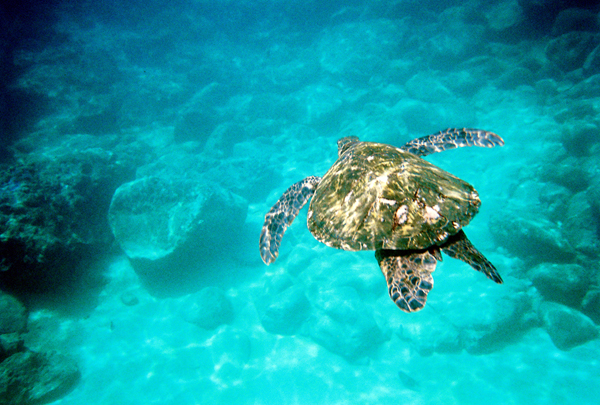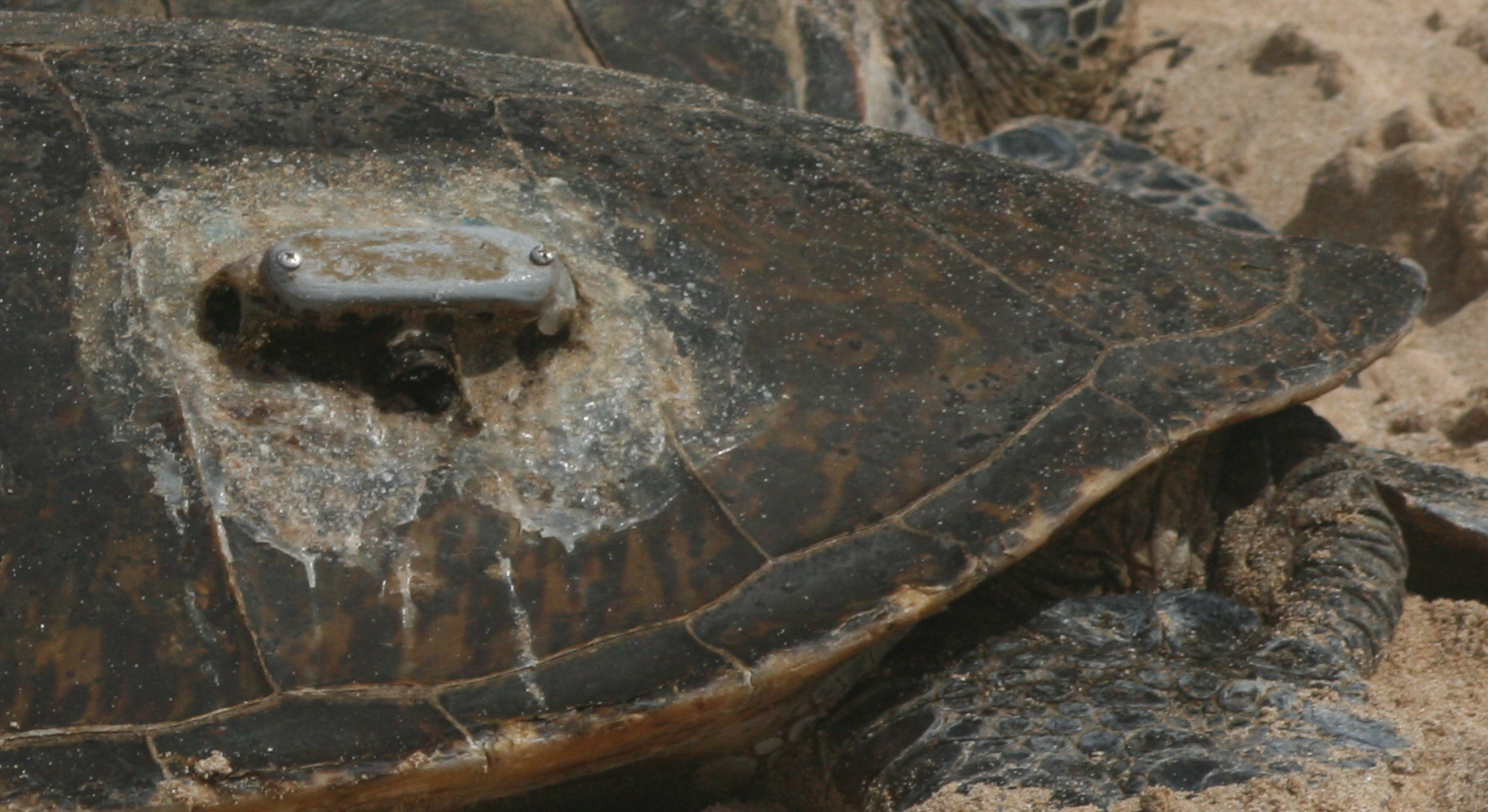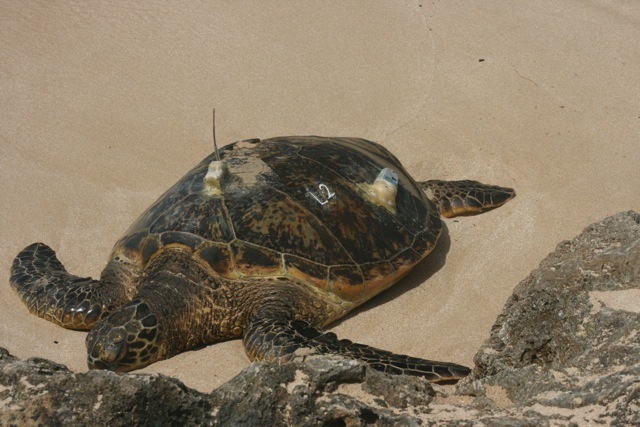Published in the Ocean Watch column, Honolulu Star-Advertiser © Susan Scott
March 14, 2008
Hawaii’s honu are full of surprises. Biologists recently discovered that during migrations from Oahu to their French Frigate Shoals breeding grounds, our green turtles go deep-sea diving.
I call it that because the turtles’ dives aren’t just casual drops below the surface for a few minutes. In this study, three adult turtles swam down an average 115 to 180 feet and stayed deep for 35 to 44 minutes before they came up to breathe. This diving went on all night, every night during their 30-some day migrations there and back.

These dives set some records. The female once dived to 453 feet, and one male made several dives of 338 feet. Six of the turtles’ shallower dives lasted more than three hours, one for 3.6 hours.
These are the deepest and longest dives ever recorded for green turtles in the wild. Why they do it is unknown.
It certainly doesn’t seem efficient. Diving deep and long takes energy. The turtle has to work to swim down that far, and work some more to stay there. Neutral buoyancy in an adult turtle with its lungs full of air is about 65 feet. Deeper than that and the turtle must sink or swim.
Biologists previously assumed that during their 500-mile trip through rough, open ocean, migrating turtles swim just below the turbulent water, say three to 12 feet down. And they do. But only during the day.
Each evening around 7 p.m., down they go 100-some feet, swimming up and down all night long. At 6 to 7 the next morning, the turtles resume their near-surface positions, swimming fast toward their goal.
Researchers have some theories about the turtles’ dives. One hypothesis is that the turtles are down there riding favorable currents. A rub to this theory is that the turtles’ depths were similar in both directions.
Another possibility is that when the turtles go deep, they’re exploring. Maybe the turtles are looking for the bottom, which would let them know they were reaching shallow water.
It’s also possible that the turtles are trying to avoid sharks in those black, nighttime depths. One of the males in this study returned from French Frigate Shoals to Laniakea missing part of its left rear flipper.
Turtle researchers thought that greens didn’t eat during their migrations, but this could be wrong. The diving turtles might be searching for food at those depths, replenishing their energy.
The diving information in this study came from small devices called time depth recorders, or TDRs. Researchers insert these little recording machines into boxes glued to the turtles’ backs. The turtles cooperate nicely with this procedure by frequently sleeping on the beach at Laniakea on Oahu’s North Shore. Biologists working quickly and quietly can attach a TDR box, or change the TDR within, without restraining or even disturbing the sleeper.

Closeup of TDR on a turtle L-4, (Oliva Dawn). Photo courtesy of Patrick Doyle.
Local turtle biologists Marc Rice and George Balazs conducted this study, published this month in the Journal of Experimental Marine Biology and Ecology.
To further study this diving behavior, the researchers might attach tiny cameras to migrating turtles, insert jaw sensors to measure eating patterns or use GPS to calculate dives with speed of travel.
Until then only the honu know why they dive. Their mystery is one of the reasons we love them.

Turtle L-2 (Hiwahiwa), with TDR and Satellite Tracker, basking at Laniakea, Oahu.
Photo courtesy of Patrick Doyle.